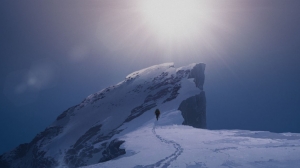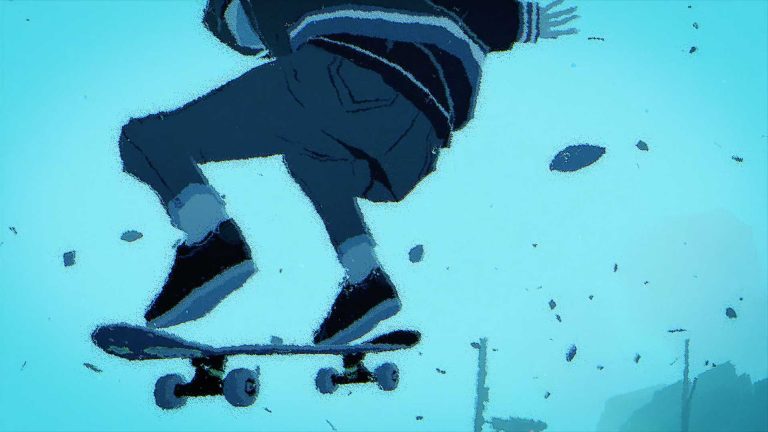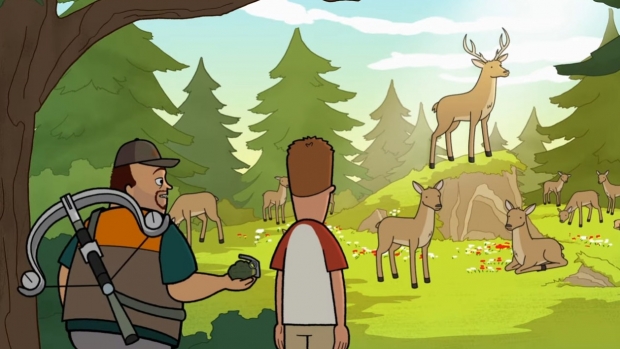“The sound is really important, and you lose a lot if you see it on a small computer screen at home, I think,” says Imbert. “I want this to reach the largest number of people as possible.”
In his quest to locate Habu and uncover the mystery of Mallory’s ill-fated expedition, Fukamachi learn’s of the reclusive climbers traumatic past and finds that the only way to get answers is to join Habu on a climb of Everest.
This poses an obvious question: “Why climb Everest?” What is it about this devilish Alp, and others like it, that drives people to dedicate their lives, at great personal risk, to climb an inhospitably cold, deadly summit? It’s a question that not only fascinated Baku Yumemakura, author of the 1994 novel, “The Summit of the Gods,” but also Jirô Taniguchi, who created a five-volume manga adaptation in 2000.
French Alpine Club member Charlie Van Der Elst and Everest climber Vincent Vachette worked with Imbert and the team in an advisory capacity. They discussed sensations of cold, the deafening sound of the wind while sleeping under the tent, how knots are formed, how one’s breath retreats at altitude, and more – all valuable information for Imbert, tasked with creating a fantastical, but very real world. And all on a budget.
It also took hold of Jean-Charles Ostorero, co-writer and producer of the hauntingly beautiful, 90-minute, 2D animated film, The Summit of the Gods, which releases in theaters today, November 24, and November 30 on Netflix. Directed by Patrick Imbert, co-director of The Big Bad Fox and Other Tales, the film is produced by Ostorero, Stéphan Roelants and Didier Brunner, best known for the award-winning animated comedy The Triplets of Belleville and the subsequent Ernest & Celestine. Imbert, Ostorero, and Magali Pouzol wrote the screenplay; Thibaut Ruby executive produced.
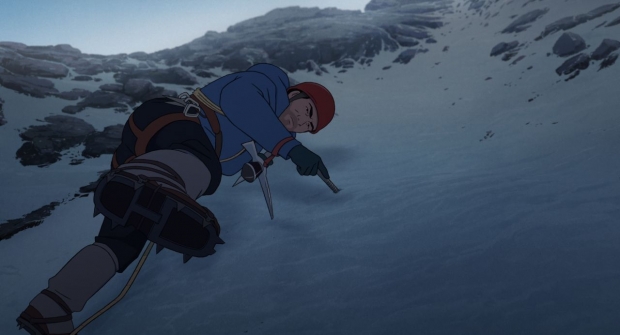
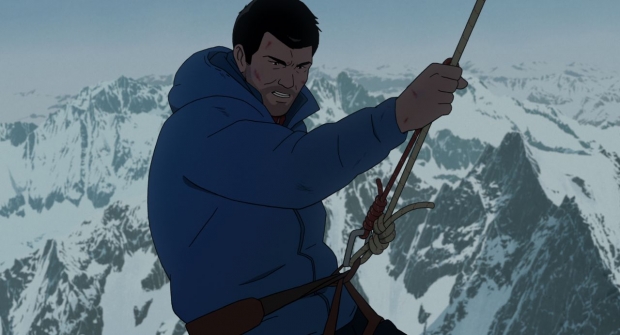
The Summit of the Gods film – animated by Wolfwalker’s Paris-based producer Folivari – aims to bring to life what many of us have only ever seen in live-action films or documentaries. Large, artistic landscapes of Asia’s most intense mountain ranges and summits, peaking through the clouds as snow blows across the screen in menacing swirls. Of course, it’s not all so intimidating; the incredible sunsets and star-lit nighttime skies capture the mountains’ breathtaking beauty, which is, in a word, heavenly. The film expertly opens a window into this obscure, dangerous yet beautiful world, helping us understand the appeal of risking one’s life for a glimpse of the world from the highest points on earth.
Victoria Davis is a full-time, freelance journalist and part-time Otaku with an affinity for all things anime. She’s reported on numerous stories from activist news to entertainment. Find more about her work at victoriadavisdepiction.com.
“This is the last scene that I storyboarded because it was so difficult to find the right level for the immersion,” says Imbert. “It needed enough, but not too much. And this balance was really hard to reach.”

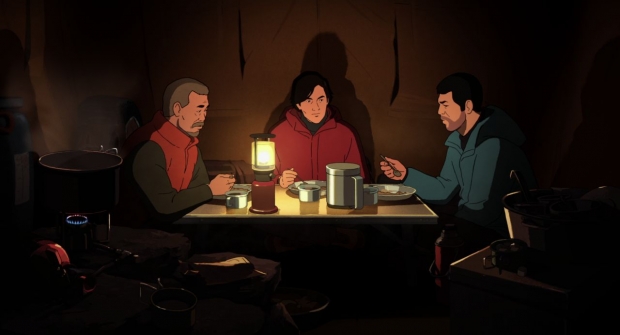
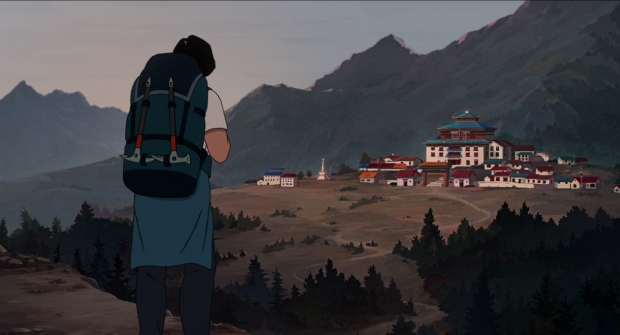
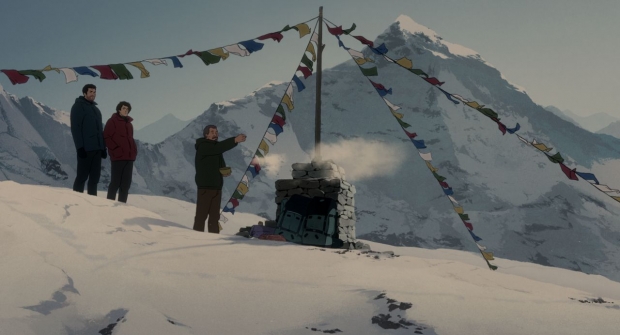
“First, I want audiences to have a good time watching the movie and to be touched,” he says. “And I know it’s not easy because, most of the time, the audience doesn’t go to see adult animation movies, which is definitely too bad. But I hope they will climb that wall and open up enough to go and see this kind of movie.”
After four years of work, this story is ready to be told once again. And Imbert has two wishes for the film’s premiere.
“I’ve done animation for many years, and I know exactly what every single movement can cost,” says Imbert. “And I have to be frugal, but also reach the audience and immerse them in the story. And I hope this will work, what we’ve done. Sometimes, you are in anguish about the results, and you don’t know if it’s going to work. But I think this will work.”
Luckily, Imbert’s two decades of experience in 2D animation helped in developing an ambitious, realistic 2D look that elicits awe and extreme emotion from viewers. After all, it’s not just mountains that Imbert had to capture, but also the sense of danger and peril that comes with climbing, falling from extreme heights and even slowly freezing to death. Imbert says one of the most challenging scenes to create was when one young climber must make the choice to cut his own rope and fall to his death, rather than risk the life of his partner.
He concludes, “And, second, I want them to hold onto what Fukamachi says at the end of the film, and know that there is nothing to say, just to do.”
While Imbert wanted to capture the essence of Taniguchi’s original work, as previously explained, he still wanted to find his “own way” and own style to bring the story to life with such visuals and landscapes.
He adds, “The question of who reached the summit first, is just a way to start the story. It’s useful at the beginning and, little by little, Fukamachi will understand that, once he has the answer, it’s not important anymore. What’s important isn’t finding the answer. What’s important is just climbing.”
Unfortunately, one person who will not get the chance to see the film is Taniguchi himself. The manga creator passed away in 2017 but was able to see Imbert and Ostorero’s script shortly before his death and expressed excitement about where the two filmmakers were taking his story.
This award-winning story follows the journey of two characters: photojournalist Fukamachi Makoto and skilled, but outcast, climber Habu Joji. Down on his luck and anxious for a story of substance, Fukamachi goes on a mission to locate the elusive and forgotten Habu, only to discover that the climber might have in his possession the camera of George Mallory – a real-life Everest explorer who lost his life on the mountain in 1924 and who some say was the real “first” to successfully crest the summit. Might that little Kodak camera reveal the truth?
“Climbing is a very technical sport, and also these mountains are real places,” says Imbert. “What we show is real. So, we had a lot of video references because we cannot even imagine everything. But, to me, it was impossible to rival the live-action because, in those films or documentaries, you have a lot of helicopter views or drone views that turn around the summits, which is very amazing. But since animation is flat, we cannot do this. So, I didn’t ever want to try to do the same. I thought to myself, ‘Let’s find our own way.’”
In 2001, the manga was awarded a prize for excellence by the Agency for Cultural Affairs at the Japan Media Arts Festival for the story’s illustrations of alpine environments around Asia and its breathtaking views of the Himalayas. And, when French publisher Kana brought the story to European audiences, Taniguchi was once again praised for the manga’s imagery, winning the prize for best drawing at the Angoulême Festival in 2005. So not only did Imbert and his team face the daunting task of challenge of tackling a deeply philosophical question–originally covered in 1,500 pages–in a limited amount of time, but they also had to do justice to the captivating visuals from Taniguchi’s manga.
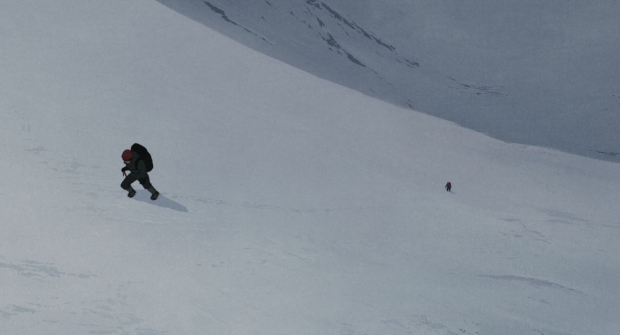
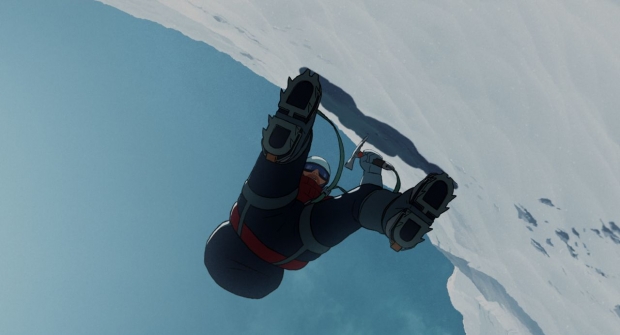
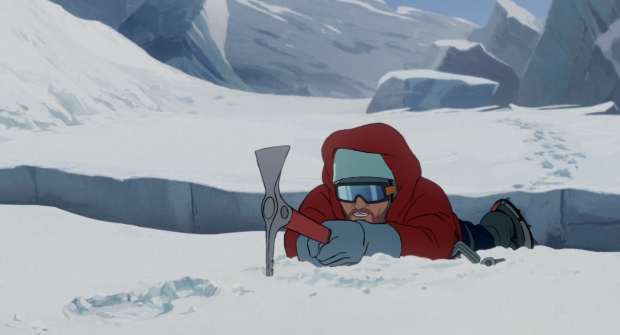
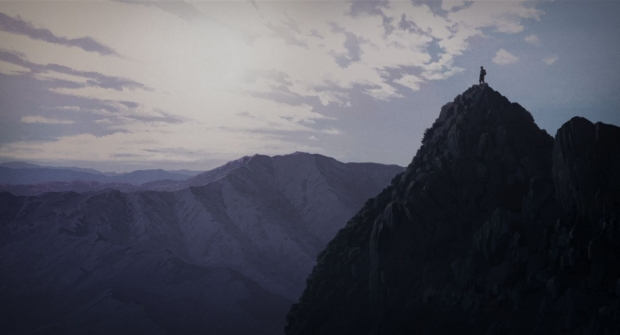

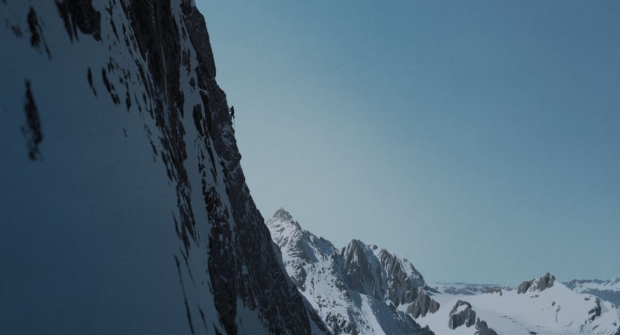
“The story’s question is, ‘Why do we do the things we do? Why are these guys climbing?’” says Imbert. “And the answer is just, they do it. That’s all. And this is a question I asked myself while working on this film. If you asked me why I draw, I wouldn’t have anything to say. I draw because it’s my own way. And I hope this question can speak to everyone on some level.”
“We paid a lot of attention to every single detail in the composition, because these details are important for leading to this complicated feeling at the end,” explains Imbert. “Making a movie, of course, is difficult. I mean, to draw so many drawings, this is our job. But to tell that story well with your drawings, it’s so difficult.”
In 1953, Edmund Hillary and Tensing Norgay successfully scaled Everest – the tallest mountain in the world – and undoubtedly lit a fire in the hearts of obsessive mountain climbers around the globe. Since then, those 8,848 meters of treacherous snow and ice have permanently ended the aspirations of even the most skilled of mountaineers; while nearly 5,800 climbers have ultimately conquered its summit, 300 have died during what proved their final, grueling challenge, bodies hidden, perhaps forever, now part of Everest’s haunting but undeniably majestic terrain.
At one point during early production, there was talk of making Ostorero’s film adaptation in 3D, rather than 2D. “Just because it is technically very difficult to draw because of all the details, we thought about doing it in 3D,” notes Imbert. “But studio Folivari doesn’t do any 3D, so we met some other studios and we quickly understood that American studios now have reached such quality standards in CG that, if you want to do a good CG animation, it’s really expensive, and we didn’t have enough money to do that. So we came back to the 2D solution.”

Imbert adds that an advantage to his and Ostorero’s animation is that they can use both sight and sound to convey the physical and emotional journey of Habu and Fukamachi. And it’s why the director is looking forward to an actual theater release.
